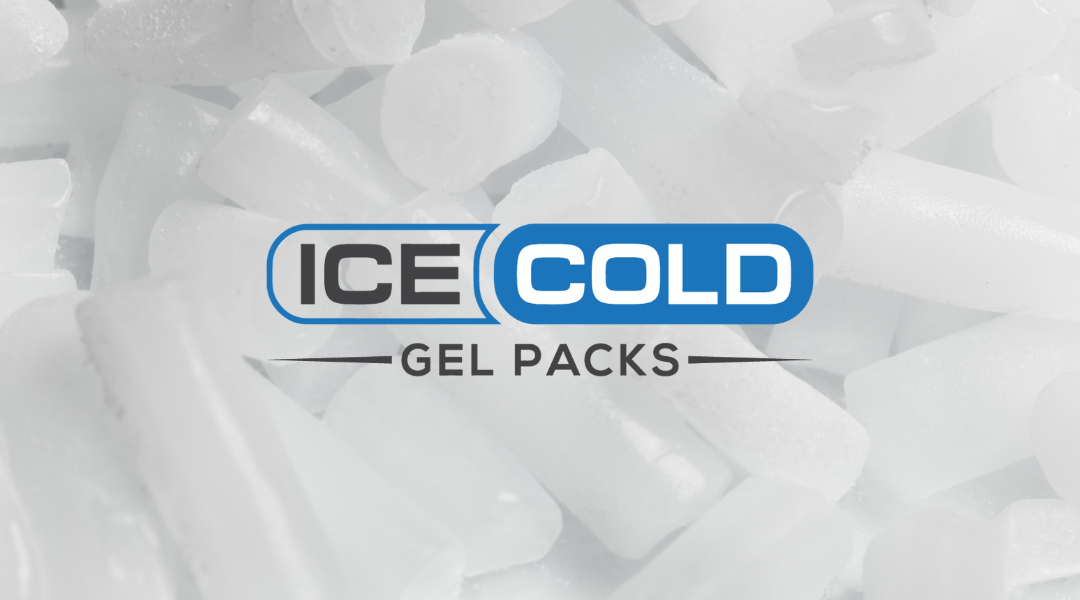As home-delivered meals rise and shipping costs increase, the perpetual query remains: what is a sustainable replacement for dry ice? Below are six reasons why cold chain suppliers would desire a different temperature control agent for shipping temperature controlled or perishable products.
Unstable performance
Dry ice packs and regular ice for shipping get very cold, but typically sublimate within 1-3 days based on amount and insulation. If a delivery is delayed or has multiple stops, the food item, such as steak or ice cream, may arrive at the customer's place at room temperature.
Because handling dry ice is dangerous, some sort of buffer material in addition to ice gel packs is necessary to prevent flash freezing or the items becoming brittle. This often requires shipments using dry ice to include gel packs anyway.
Safety
Dry ice melts and can cause frostbite and Hypercapnia, a condition caused by too much CO2 in the bloodstream putting stress on the lungs and making it difficult to breathe. Dry ice can be lethal in extreme cases as discussed below. Additionally, contaminants make industrial dry ice unsafe to contact consumable products. Shipping cold packs and reusable cold packs keep your package at the correct temperature safely and insure your products stay fresh.
Necessary Ventilation
Do not enter any enclosed areas which have stored dry ice until they have been adequately ventilated. Normal air consists of 78% Nitrogen, 21% Oxygen and 0.035% Carbon Dioxide. If the Carbon Dioxide levels go above 0.5%, it can be dangerous.
Small concentrations of CO2 can cause quicker breathing, headaches, and drowsiness in some but are otherwise not harmful.
If dry ice has been left in a closed auto, van, room, or walk-in freezer for more than 15 minutes, open doors to allow adequate ventilation before entering. Exit all areas containing dry ice CO2 if you start hyperventilating, develop a headache, or your fingernails or lips start to turn blue. These are signs that you have too much CO2.
HAZMAT Regulations
While not classified by the United States Department of Transportation (USDOT) as a hazardous material for ground transportation, it is classified as such for air and by water. The Federal Aviation Administration (FAA) only allows passengers to carry up to 5.5lbs with them on planes.
The US Postal Service likewise limits the use of dry ice to less than 5 pounds for any airmail or express packages. These combined with additional safety precautions make dry ice a bit of a hassle.
Cost
Since it evaporates quickly, shippers must pack coolers the same day they go out, and need 5-25 lbs for 1-2 day shipment. This makes it difficult to prepare for increased demand, and companies may need to take on extra staff to meet the just-in-time requirement, which can be challenging when supply is low.
Many freight companies will also add a $5 per/package surcharge for shipments including dry ice. This doesn’t take into consideration the additional costs of specialized packaging and handling. For instance, solid CO2 needs air holes for sublimation and packages can’t be sealed air-tight or they might explode in shipment.
Environmental Effect
When Dry Ice sublimates, it goes directly from a solid to a gas, and as it does so it releases carbon dioxide (CO2) into the atmosphere. This added carbon dioxide contributes to the greenhouse effect, which is a major factor in climate change.
Businesses and individuals should be conscious of the environmental effect of their decisions. Dry Ice should be considered when searching for a sustainable item. Sustainable products often need less oversight and generate more public support - being aware of the environmental effect of products is essential.
Gel Packs
Standard ice begins to melt quickly, leaving your dry goods wet and stored at an improper temperature. Once frozen, our standard Ice Cold Gel Packs stays colder and can last up to 65% longer than regular frozen ice derived from water.
Our Ice Cold Gel Pack has two main components; water and a sodium gel that mixes with the water to lower the temperature of the pack. Although the components inside our Ice Cold Gel Packs are considered non-toxic you should avoid handling the contents inside your gel pack and wash any skin that comes in contact with soap and water.
The best way to determine if your shipment requires dry ice or water based gel packs is to first consider the temperature you will need when shipping. If you need your package to be shipped cold but not quite frozen (30-60 degrees), gel packs are the best option.
There are several rules and regulations to think about when shipping temperature-controlled foods and pharmaceuticals; however, shipping with Ice Cold Gel Packs is easier, more cost effective, and safer than traditional refrigeration methods.
While dry ice will continue to play a role in shipment for the foreseeable future, we hope to decrease reliance on it for shipping needs. Contact us to see how our non-toxic ice cold gel packs can innovate your shipping needs.


1 comment
Interesting read—didn’t realize how tricky dry ice can be when shipments get delayed.